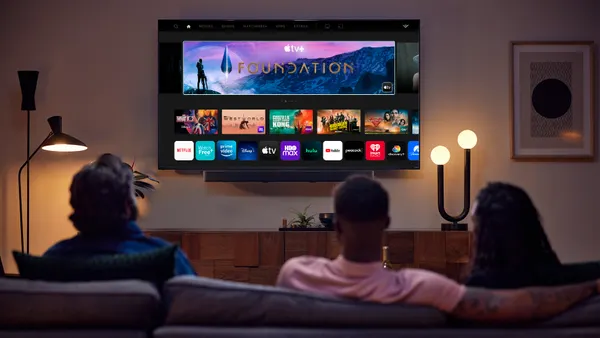Dive Brief:
- Almost one-fifth of U.S. brands had moved programmatic buying completely in-house in 2019, while more than half had transitioned to doing so partially — up 4% from the previous year — according to a new IAB report.
- The in-housing of programmatic is particularly strong in Europe, where 74% of organizations had moved programmatic in-house in 2019, either completely or partially.
- In Latin America, executing programmatic buying via a direct contract with a DSP is more popular than in-housing, with the former strategy having been embraced by 59% of organizations.
Dive Insight:
IAB's latest report follows years of growth in the programmatic category and comes as the pandemic accelerates consumer digital consumption and changes marketers' data-related needs in the face of growing regulations and third-party cookie degradation.
Programmatic is expected to reach $98 billion in ad spend by 2021, making up 68% of digital media advertising, according to a report from Zenith cited by IAB, underscoring the important role that automated digital media supply chains have across the marketing industry. U.S. advertisers are the primary driver of this programmatic spend globally, and the region will continue to see growth, the report forecasts.
"As the industry braces for the loss of third-party cookies and audience identifiers, direct engagement in programmatic advertising matters more than ever," Orchid Richardson, VP and head of the IAB Programmatic+Data Center, said in a statement. "Brands aren't generally taking over the whole process, but they are taking over the development of programmatic strategy to strengthen customer connections and to control both first-party data and functions that relate to legal and regulatory compliance."
During the pandemic, brands are using programmatic more frequently to reach consumers who are spending more time inside and online, putting pressure on marketers to respond quickly to a changing environment and create relevant ads that reflect those changes. That evolution could be long-lasting, according to a statement by Scott Tieman, global head of programmatic services at Accenture Interactive, which worked with IAB on the report.
As the media space evolves quickly, brands are looking for more control over the channel and are therefore bringing more of it in-house. This approach gives brands greater transparency, which translates into "better return on investment (ROI), attribution, cost efficiency, and campaign effectiveness," according to the report. However, even with organizations that have in-housed programmatic advertising, most are utilizing a hybrid approach that relies on an agency for part of the execution.
With the category's growth, professionals trained in the area will continue to be in high demand by brands, agencies and tech companies, with all parties concerned about recruiting, training and retention of this talent, per the report.
Mobile is one of the biggest channel drivers of this programmatic buying, as consumers' increased mobile usage from the pandemic's early stages is expected to remain the norm. Similarly, the IAB data reinforces other reports that have found that CTV is expected to continue growing as consumers maintain the cord-cutting trend.
However, the findings must be taken in context, as the research was produced with Accenture, a company that works on the functions detailed in the report. IAB first started publishing this research with Accenture a few years ago, and this research has previously been met with skepticism as the surveys tend to support Accenture objectives.












